A square knot is an ancient binding knot that sailors have used for centuries. It is sometimes used as a bend, but it’s recommended not to use it as such. Square knots are quick and easy to tie and are ideal for non-critical situations. It’s not recommended to use them with heavy loads or in critical situations. They are very insecure and can be dangerous when misused.
You likely learned how to tie a square knot as a child, as they are popular for tying shoelaces. They are also popular for tying sails, securing bundles, and making jewelry.
Knots similar to the square knot include:
- The flat knot
- The granny knot
- The double throw knot (surgical knot)
- The thief knot
Follow the simple instructions below to learn how to tie a square knot.
What Are Square Knots?
Square knots are simple binding knots comprising two half knots. You can use them as a bend that connects two ropes, but it isn’t recommended.
Square knots are otherwise known as “reef knots.”
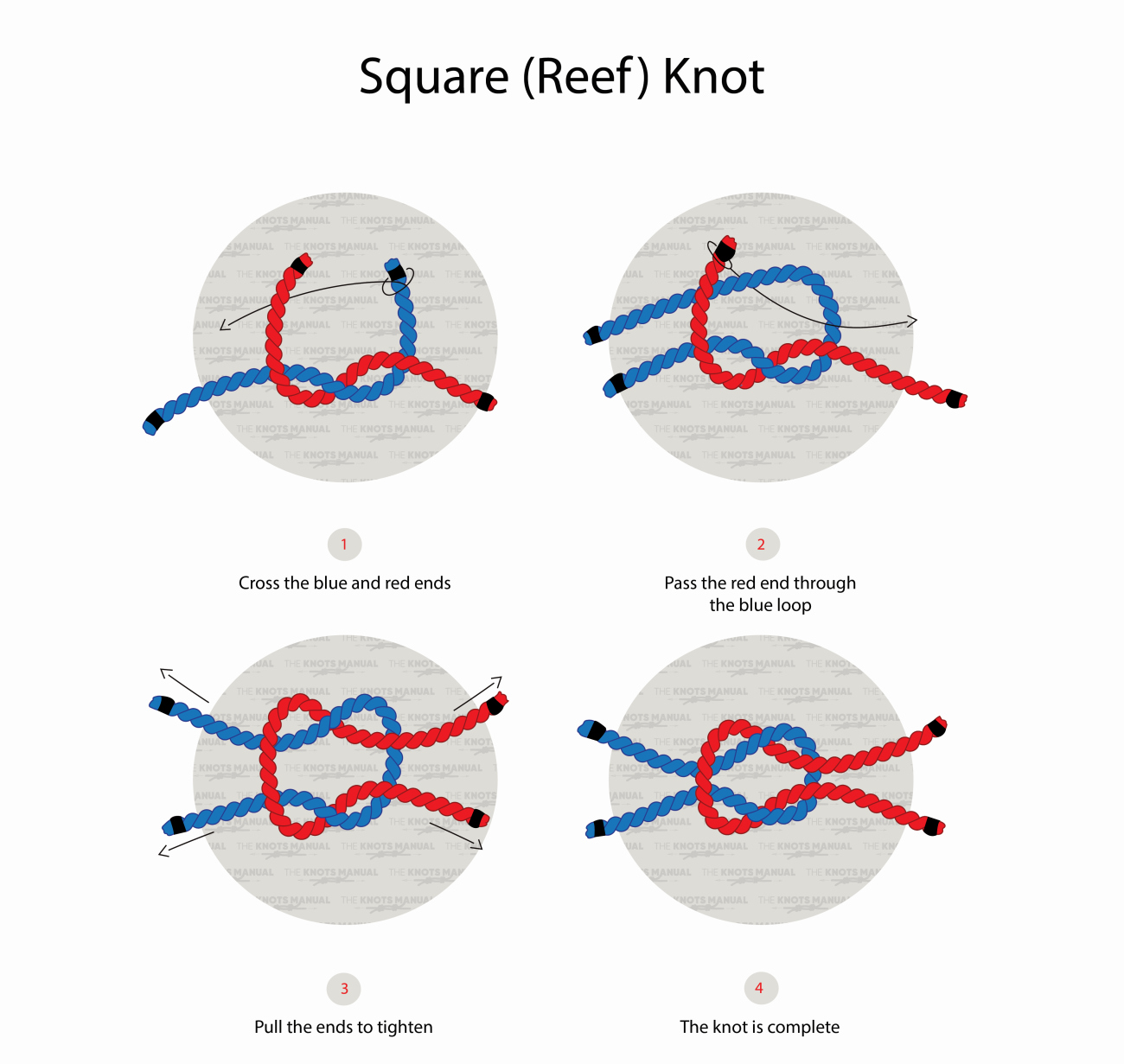
The History Of The Square Knot
The square knot has been around for at least 4,000 years, but it didn’t receive the name “reef” knot until 1794.
The ancient Greeks knew the square knot as the “Hercules knot (Herakleotikon hamma).” Pliny the Elder wrote his book Natural History. It is the largest single text to have survived from the Roman Empire. He believed that wounds healed quicker when bound with the Hercules knot. Besides its uses in medicine, our ancient ancestors used it to tie their belts and sashes.
Sailors have been using square knots for centuries to reef sails, which is where it got its original name. Reefing a sail refers to tying part of a sail down to minimize the surface area being used during strong winds. Sailors also used the knots to tie things onboard the ship.
The name “square” knot didn’t come about until 1841 in the book, A Seaman’s Friend, by Richard Henry Dana Jr.
Tying Shoelaces
For many of us, the square knot is the very first knot we ever learn in life, though we rarely realize it. Square knots are the cornerstone of the knot we use to tie our shoes. Our shoes usually end with a bow, so you might not recognize it as a square knot. Still, the square knot is there, hidden underneath the bow.
Advantages Of The Square Knot
Square knots are useful because they’re easy and quick to tie. They are straightforward knots, so once you learn how to make them, it’s unlikely you’ll ever forget. As a type of binding knot, they can be somewhat difficult to untie. Still, by pulling the two standing ends simultaneously, the knot comes undone effortlessly.
Disadvantages Of The Square Knot
Unfortunately, square knots don’t have many practical uses because they are untrustworthy.
They are a type of binding knot, but they don’t always bind, and you can’t trust them to stay bound. The first half knot often binds if you use the right material and work the knot correctly. Still, it is likely to fall apart.
They easily slip, which you already know if you’ve ever had to retie a shoelace that’s come undone. They easily jam, too, and it’s easy to tie a granny knot instead of a square knot mistakenly. Granny knots are even more unstable than square knots, so such a situation is less than ideal.
Sometimes, knot tyers will create a series of square knots to make the structure more secure. Yet, adding more square knots to the mix rarely helps with stability. The extra knots are just as likely to capsize and come undone.
According to The Ashely Book of Knots, you should never use the square knot with critical loads. Ashley says, “There have probably been more lives lost as a result of using a Square Knot as a bend (to tie two ropes together) than from the failure of any other dozen knots combined.”
Making Square Knots More Effective
You can, however, add half knots to the square knot for added security.
Still, you should NEVER use a square knot as a bend in critical situations. A bend is when you use a knot to connect two ropes.
Square knots work best when you use two ropes of the same diameter. They also work better if you press the ropes up against a sturdy object while tying.
How To Tie A Square Knot
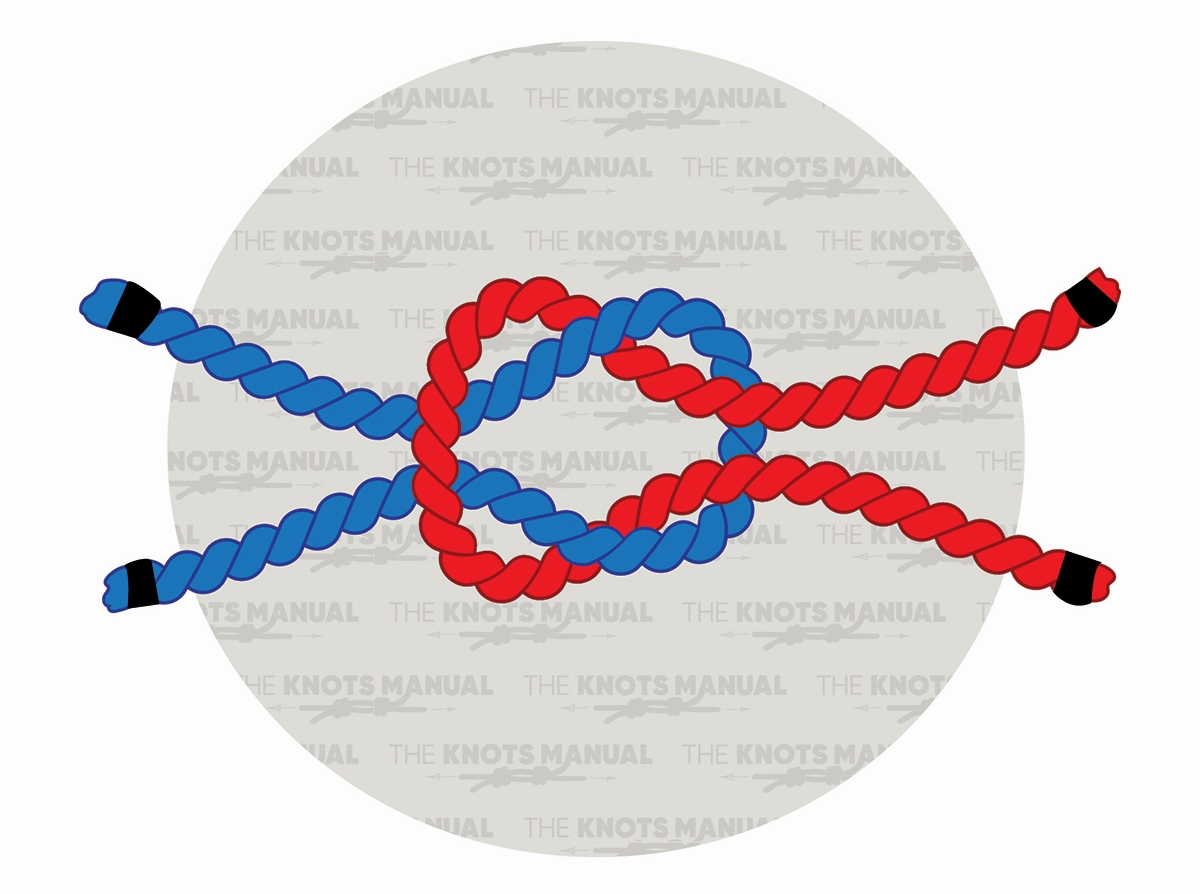
Tying a square knot doesn’t have to be complicated; just follow the simple directions below:
Begin with two separate ropes overlapping each other.
Step 1:
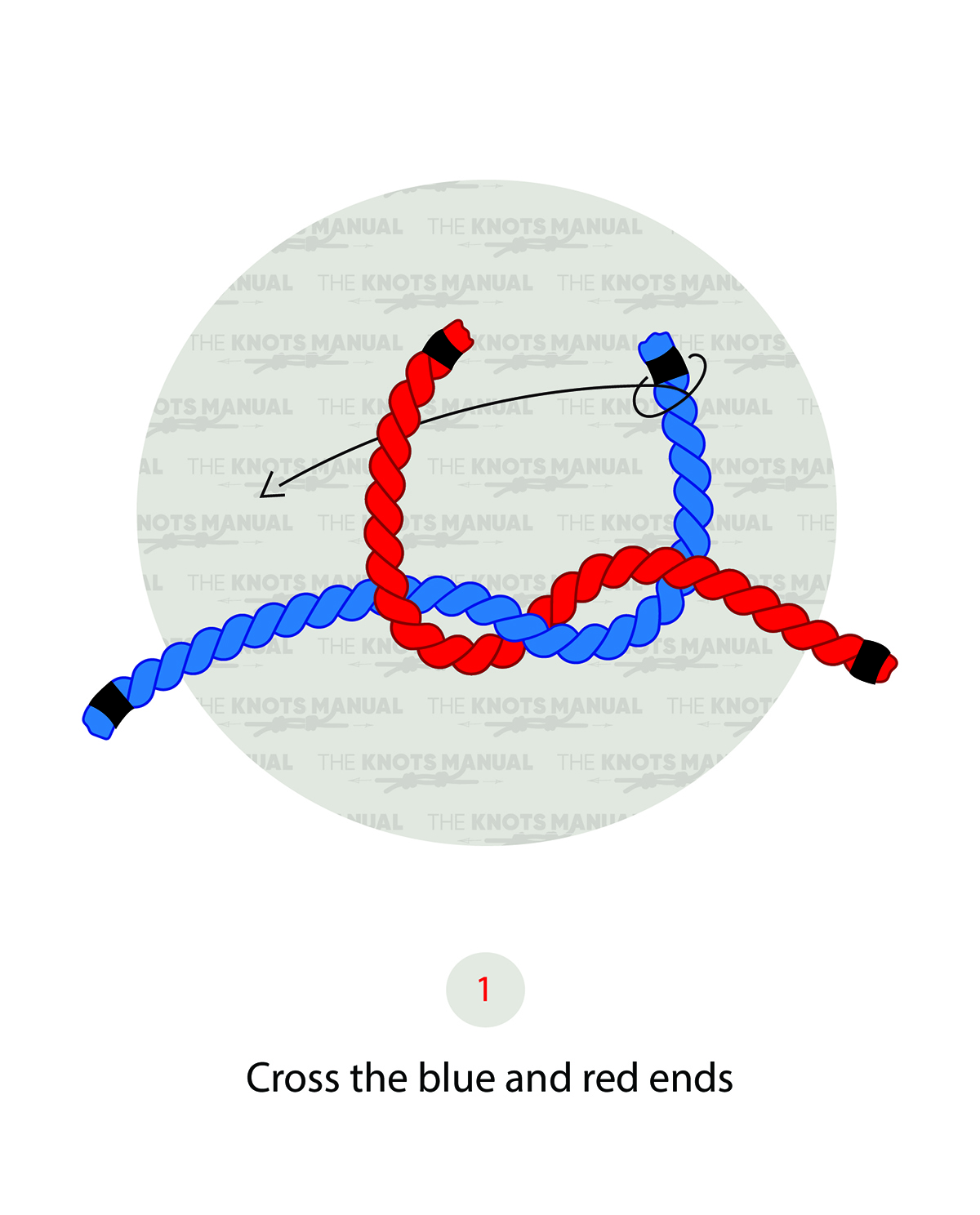
Cross the red rope’s working end over the blue rope’s working end.
Step 2:
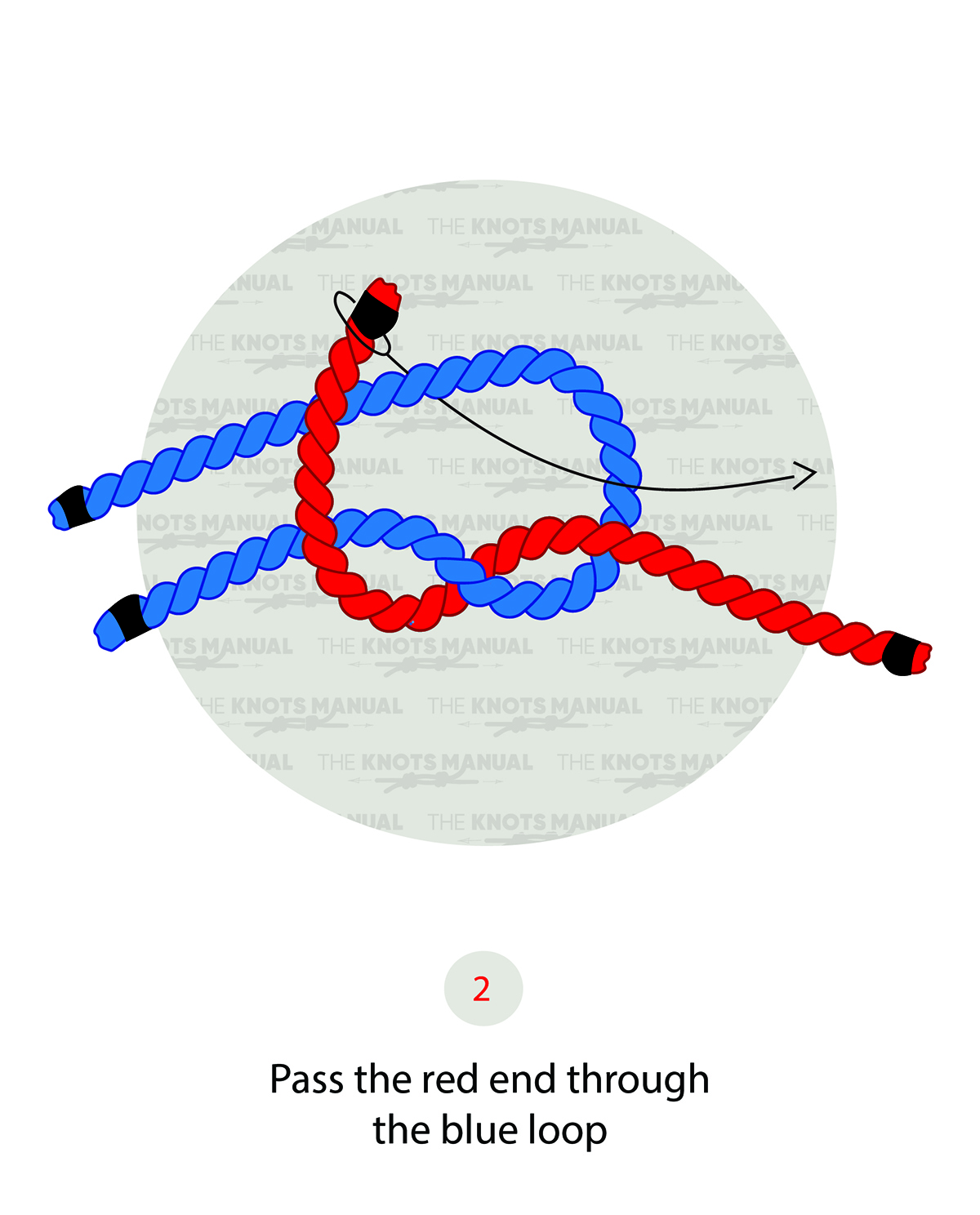
Pass the working end of the red rope through the loop created by the blue loop.
Step 3:
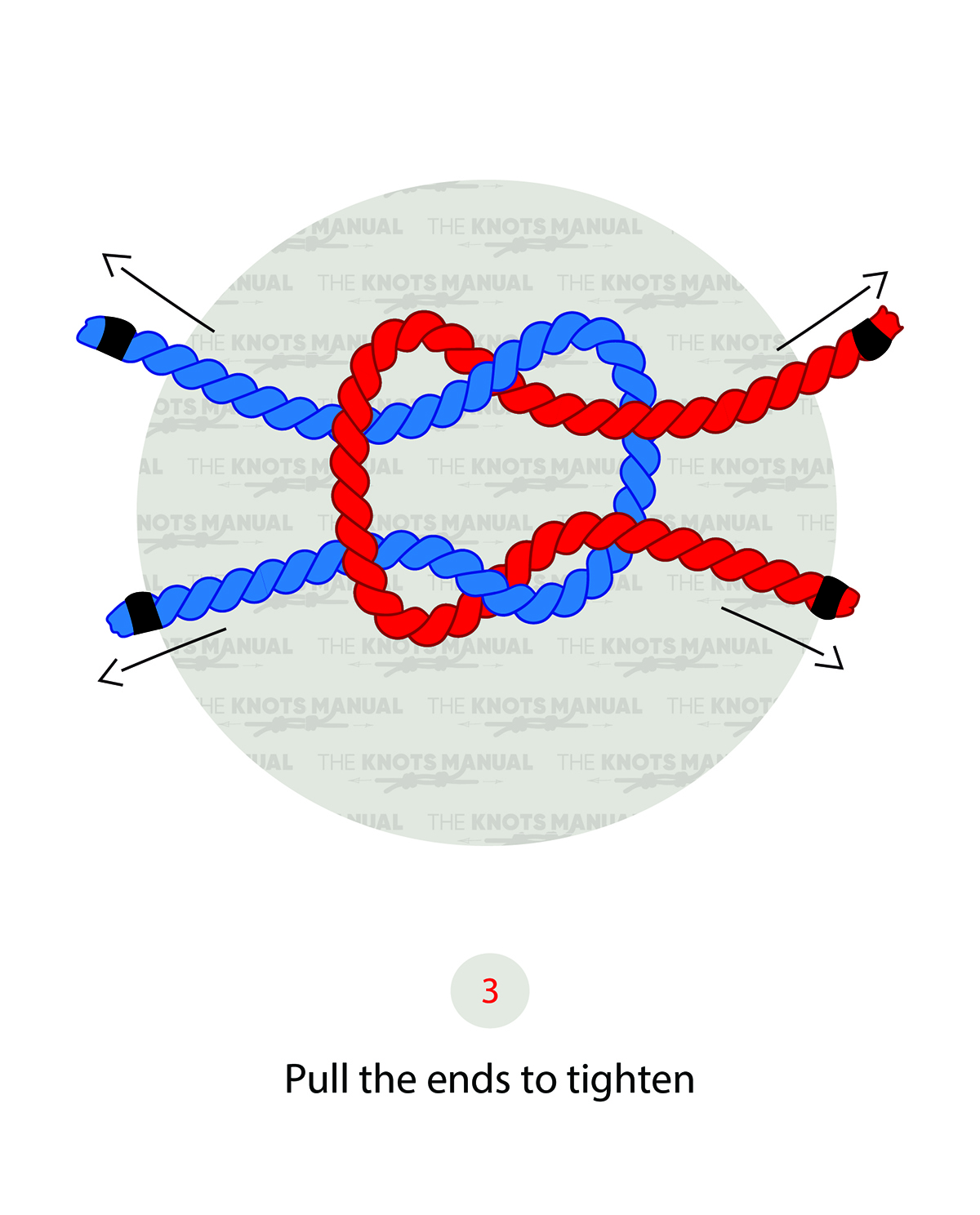
Pull both ropes’ working ends and standing ends simultaneously to tighten the knot.
Step 4:
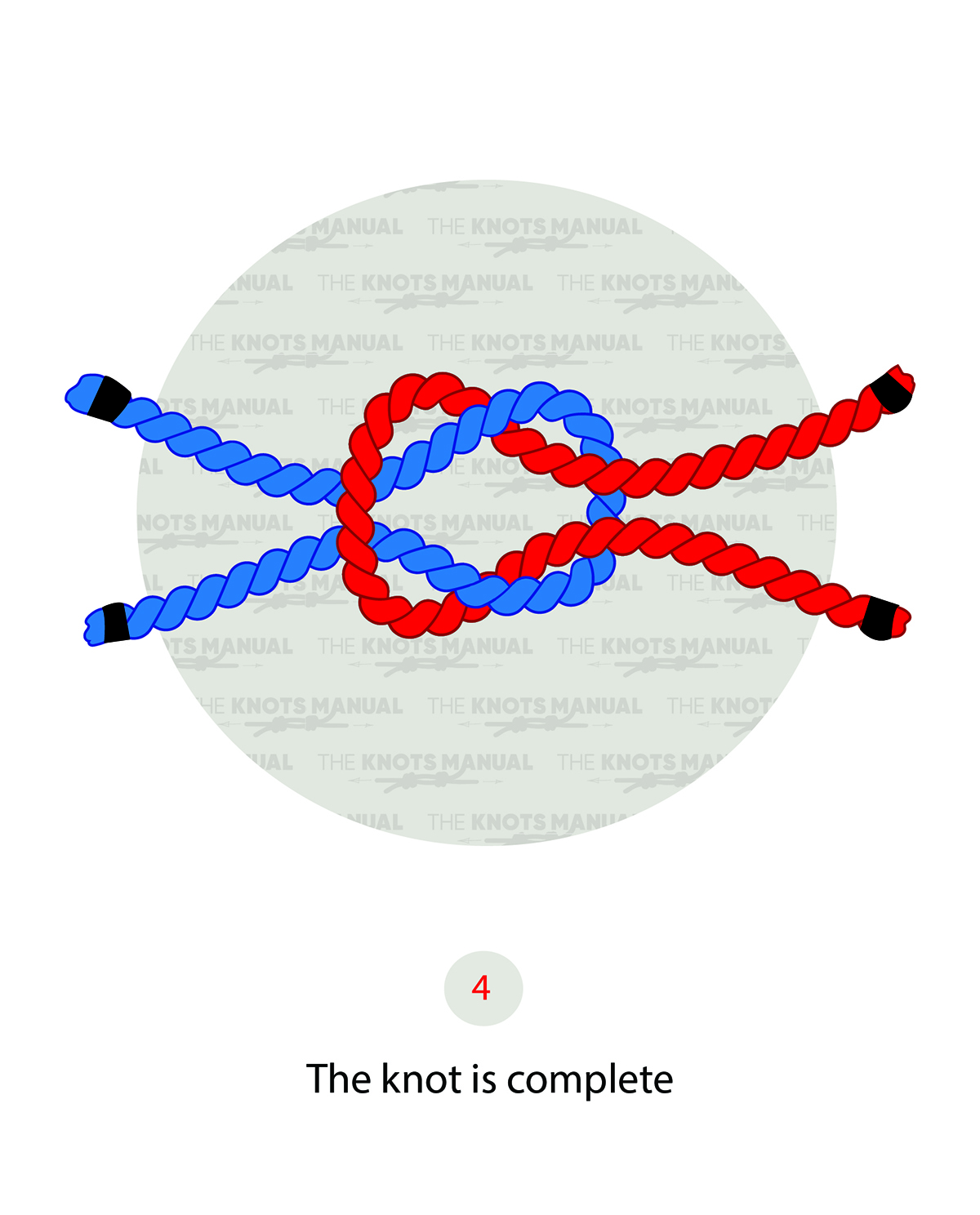
The square knot is complete.
* You can also tie a square knot using bights, which leaves you with a more secure knot. *
* Avoid creating a granny knot: ensure the standing and working ends of the rope exit the knot together. *
What Are Square Knots Used For?
Though square knots are unstable and unsafe for critical loads, they have many uses. They are a popular knot for use where safety is not a concern, such as with crafts.
Jewelry
Square knots are popular for making jewelry and beadwork. Designers use the knot to tie two ends of a cord together.
Teaching
Square knots are still important to learn, even if you have yet to use one practically. Square knots make up the foundation of half knots and half hitches. By learning to tie a square knot first, it’ll be easier to learn how to tie other, more complex knots.
Boy Scouts in the United States must show skill in tying the square knot to graduate from their programs. Other scouts worldwide must master tying the knot, too, and scouts can win awards for their mastery of it.
Other Uses
Nine other common uses of the square knot include:
- Tying shoes
- Tying a bow on a gift
- Macrame
- Tying a sail cover over a sail
- Securing a bundle (e.g., sticks, blankets, ski poles, garden tools, oars)
- Securing rope coils
- Bandages
- Tying the obi (belt) of keikogi — a form of martial arts
- Tying plastic garbage bags to create a makeshift handle
Knots Similar To The Square Knot
Flat Knot: These knots are the same as a square knot but are used in a reef line. They lie entirely flat, making them ideal for bracelets and belts.
Granny Knot: Granny knots are often mistakenly tied while trying to tie a square knot. They are a binding knot which is less secure than a square knot. Granny knots are used to secure a rope around an object, although they are quite insecure.
Double Throw Knot (Surgical Knot): Surgeons use these knots as the first part of a ligature. It is possible to mistakenly tie a square knot instead of a surgeon’s knot if you aren’t paying attention.
Thief Knot: These knots are useless, yet interesting to tie. They are almost identical to the square knot. As the legend goes, sailors would tie their duffel bags closed with a thief knot to identify stealing. The thief would retie the bag with a standard square knot. Doing so would create a subtle difference only the bag owner would detect. It is unclear if there is any truth to this legend, and the knot serves no other purpose.
FAQs
Is The Square Knot Illegal?
There is no evidence suggesting the square knot is illegal. In fact, many people still use it for many purposes. Yet, the square knot is insecure and should never be used with critical loads. It slips easily and can become dangerous when used with heavy loads.
Do You Use A Square Knot For Restraints?
You should not use the square knot for restraints as it is insecure and cannot hold heavy loads. It would be very easy for someone restrained with a square knot to undo the knot and escape.
